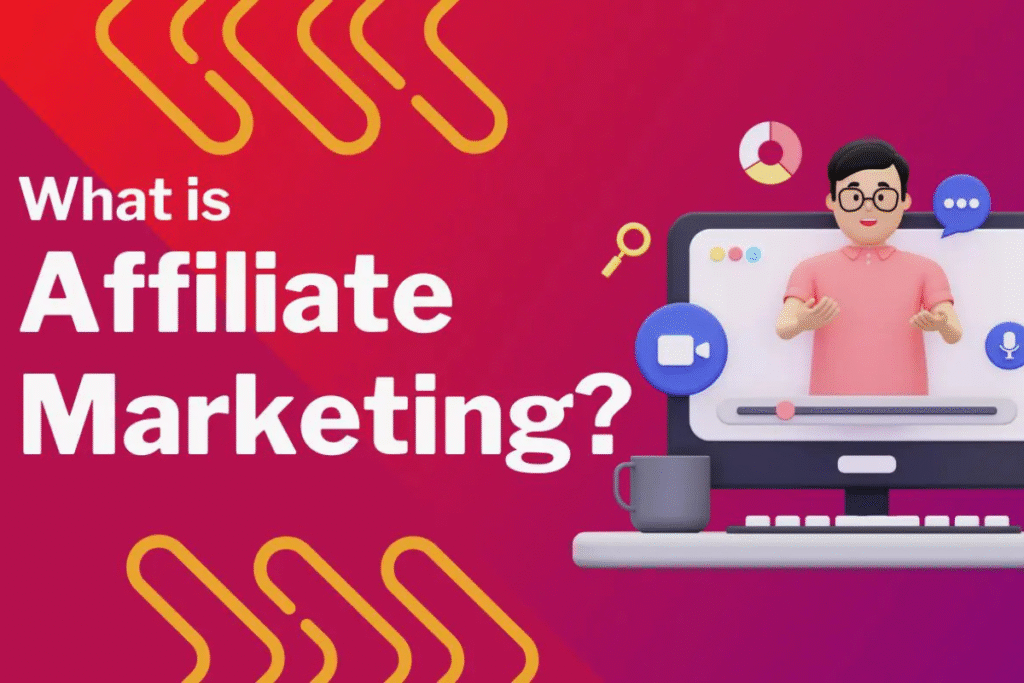Affiliate marketing has become one of the most popular ways to earn passive income online. Whether you’re a blogger, content creator, or a complete beginner, affiliate marketing provides a fantastic opportunity to generate revenue by promoting products or services. But where do you begin? This step-by-step affiliate marketing guide will help you understand the basics, learn strategies, and take the right steps to build a successful affiliate business.
What is Affiliate Marketing?
Affiliate marketing is a type of performance-based marketing where you earn a commission by promoting someone else’s product or service. When a customer purchases through your unique affiliate link, you get paid.
For example:
-
You write a blog post reviewing a fitness gadget.
-
A reader clicks your affiliate link and buys the gadget.
-
You earn a commission from that sale.
This model is beneficial for both parties—companies get sales through affiliates, and affiliates earn money without creating their own product.
Why Choose Affiliate Marketing?
-
Low Start-Up Cost – You don’t need to manufacture products or hold inventory.
-
Flexibility – Work from anywhere, anytime.
-
Scalability – As your audience grows, so does your income.
-
Diverse Niches – From health and fitness to tech and fashion, there’s something for everyone.
-
Passive Income – Create content once, and earn commissions repeatedly as long as people keep buying.
Step 1: Understand the Affiliate Marketing Model
There are four main players in affiliate marketing:
-
Merchant (Advertiser/Brand): The company selling the product or service.
-
Affiliate (You): The promoter who earns a commission for sales.
-
Customer: The person buying the product through your link.
-
Affiliate Network (Optional): A platform connecting merchants and affiliates (e.g., ShareASale, CJ Affiliate).
Step 2: Choose a Profitable Niche
Picking the right niche is crucial. A niche is a focused topic or industry you’ll be promoting products in.
Tips for Choosing a Niche:
-
Go for something you are passionate about (e.g., travel, fitness, personal finance).
-
Ensure there’s a market demand (use tools like Google Trends).
-
Check the competition—high competition can be profitable but harder to rank.
-
Look for products with good commission rates.
Examples of Profitable Niches:
-
Health & Wellness
-
Personal Finance & Investing
-
Technology & Gadgets
-
Beauty & Fashion
-
Online Education
Step 3: Select the Right Affiliate Programs
Once you’ve chosen a niche, find affiliate programs that offer relevant products.
Types of Affiliate Programs:
-
High-Paying, Low-Volume: High-ticket items (software, courses).
-
Low-Paying, High-Volume: Everyday consumer goods (Amazon Associates).
-
Recurring Commissions: Subscription-based products (web hosting, SaaS tools).
Popular Affiliate Programs:
-
Amazon Associates – Wide variety of products.
-
ClickBank – Digital products with high commissions.
-
CJ Affiliate – Large affiliate network.
-
ShareASale – Many merchants across niches.
-
Impact – High-quality brands.
Step 4: Build a Platform for Affiliate Marketing
You need a platform to promote your affiliate products.
Best Platforms for Beginners:
-
Blog/Website – Write product reviews, tutorials, or guides.
-
YouTube Channel – Create video reviews, unboxing, and tutorials.
-
Social Media – Use Instagram, TikTok, or Facebook.
-
Email Marketing – Build a list and recommend products directly.
A blog or website is one of the most sustainable platforms for long-term affiliate marketing success.
Step 5: Create High-Quality Content
Content is the backbone of affiliate marketing. The more value you provide, the higher your chances of converting visitors into buyers.
Types of Affiliate Content:
-
Product Reviews
-
“Best of” Lists (e.g., Best Laptops for Students)
-
Tutorials & How-To Guides
-
Comparison Articles
-
Case Studies
Tips for Effective Content:
-
Be honest and transparent.
-
Use SEO to rank your content.
-
Add visuals like images, infographics, and videos.
-
Provide value before selling.
Step 6: Drive Traffic to Your Affiliate Links
Even the best content won’t make money without traffic.
Free Traffic Sources:
-
Search Engine Optimization (SEO)
-
Social Media Marketing
-
YouTube Videos
-
Online Communities & Forums
Paid Traffic Sources:
-
Google Ads
-
Facebook & Instagram Ads
-
Influencer Collaborations
If you’re just starting, focus on free methods like SEO and social media before investing in paid ads.
Step 7: Build Trust with Your Audience
Affiliate marketing is not about pushing products—it’s about building trust.
Ways to Build Trust:
-
Share personal experiences.
-
Recommend only products you believe in.
-
Provide honest pros and cons.
-
Engage with your audience through comments, emails, and social media.
Step 8: Track and Optimize Performance
To maximize earnings, track your performance regularly.
What to Track:
-
Click-through rate (CTR).
-
Conversion rate (how many visitors make a purchase).
-
Best-performing products and content.
Tools for Tracking:
-
Google Analytics
-
Affiliate dashboard (provided by the program)
-
A/B Testing Tools
Optimization means doubling down on what works and improving underperforming strategies.
Step 9: Scale Your Affiliate Marketing Business
Once you start earning, the next step is scaling.
Ways to Scale:
-
Expand into new niches.
-
Create more content regularly.
-
Use email marketing to nurture your audience.
-
Automate parts of your workflow (social media scheduling, email campaigns).
-
Outsource tasks like content writing and SEO.
Common Mistakes to Avoid in Affiliate Marketing
-
Choosing too many niches at once.
-
Promoting low-quality or irrelevant products.
-
Expecting overnight success.
-
Ignoring SEO and traffic-building strategies.
-
Not disclosing affiliate links (transparency builds credibility).
FAQs
How much money can I make with affiliate marketing?
It depends on your niche, traffic, and strategies. Some affiliates earn a few hundred dollars monthly, while top affiliates make six or seven figures.
Do I need a website to start affiliate marketing?
No, but having a website or blog makes it easier to build long-term trust and drive consistent traffic.
Is affiliate marketing free to start?
Yes, you can start for free on social media or YouTube. But investing in a website and SEO tools will help you grow faster.
How long does it take to see results?
It can take 3–6 months to see consistent income, depending on your effort, niche, and traffic sources.
Do I need prior experience to start affiliate marketing?
No, beginners can start with zero experience. The key is to learn, implement, and stay consistent.
Conclusion
Affiliate marketing is a powerful way to build an online income stream with minimal investment. By choosing the right niche, joining reliable affiliate programs, creating valuable content, and driving traffic, you can steadily grow your affiliate income.
Remember, success won’t happen overnight, but with patience and persistence, affiliate marketing can turn into a sustainable and profitable business.

